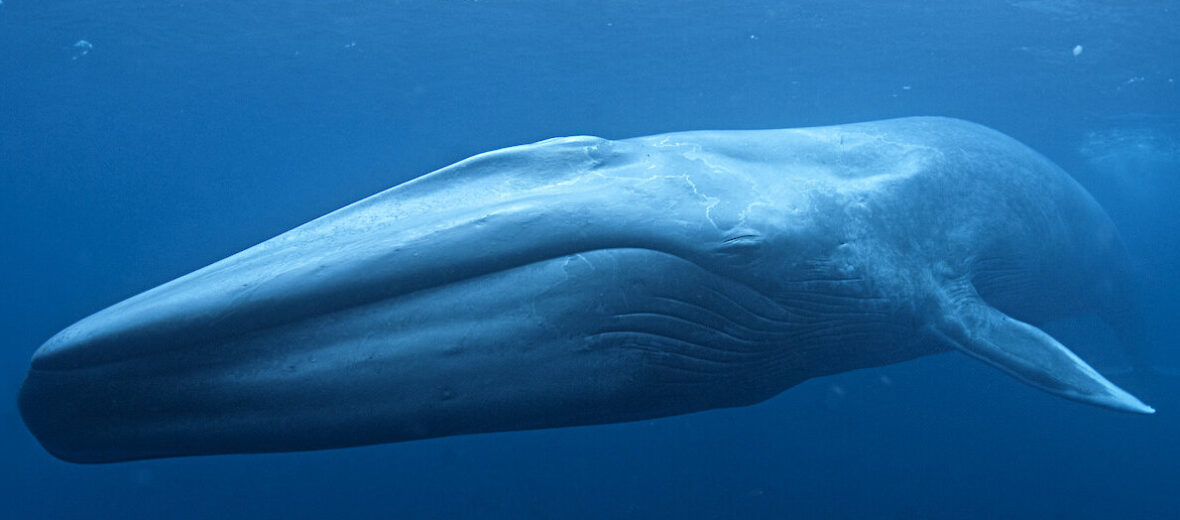
The largest creature ever known to exist on the planet… the blue whale, a gentle creature with a heart the size of a small car. They are not only majestic but beautiful as well. With only 15,000 estimated blue whales remaining today, the IUCN lists them as Endangered. This is due to overfishing, plastic pollution, bycatch (getting caught in long lines and fishing nets), and climate change. Fortunately, their numbers are increasing… slowly.
First the Stats…
Scientific name: Balaenoptera musculus
Weight: 300,000 lbs.
Length: Up to 82+ feet
Lifespan: 80 – 110 years
Now on to the Facts!
1.) Blue whales are the loudest animals on earth. A jet engine registers at 140 decibels, the call of a blue whale can reach 188! They communicate with moans, groans, pulses, and can be heard up to 100+ miles away.
2.) The blue whale can eat up to 2,200 pounds of plankton and krill in a single feast. They need about 9,000 pounds of food a day! That’s approximately 40 million krill a day.
3.) Due to their abundance of oil, the blue whales were hunted nearly to extinction in the 20th century. They are now protected worldwide.
4.) Their standard cruising speed is 5 mph. however, they can reach up to 20 mph if needed.
5.) The tongue of a blue whale can weigh as much as an elephant.
But wait, there’s more on the blue whale!
6.) The blue whale has a long migration, spending summers feeding in the polar regions and making the super long trip south to the Equator when winter approaches.
7.) They mainly catch their food by descending to depths of around 1,500 feet.
Did you know…?
It is thought that blue whales are capable of feeling emotions and have even showed gratitude for being rescued.
8.) The whale’s mouth has a row of plates fringed with bristles to help it filter its main source of food from the water. There are long bristles on the end of each plate to help it hold its prey. With each mouthful, the whale can hold up to 1,320 gallons of water that houses krill & plankton. They force the water out of their mouth and lick the food off the bristles.
9.) A calf weighs in at 5,952 pounds and is 24 feet long. They drink their mother’s milk (159 gallons a day) and put on approximately 198 pounds a day!
10.) Females breed only once every three years and gestation is between 11-12 months. Females typically have only one calf.
Now a Short Blue Whale Video!
Also, check out the Critter Science YouTube channel. Videos added frequently!
Want to suggest a critter for me to write about? Let me know here.



